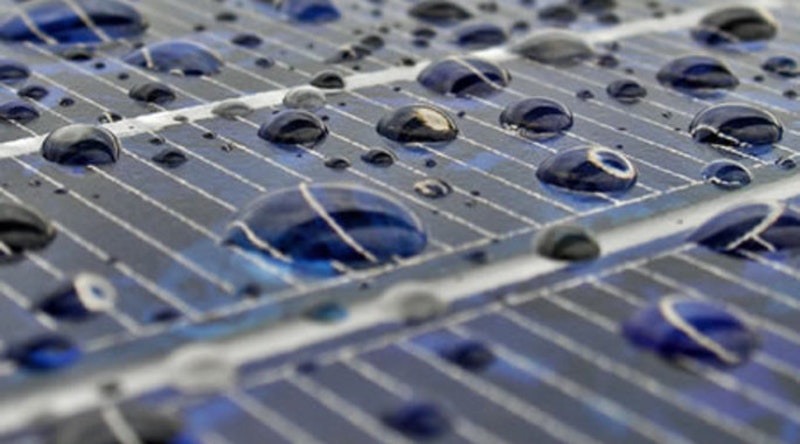Scientists have designed new solar panels to capture energy from rain as part of improvements on the current design that captures energy from the sun alone.
Two groups of scientists from Soochow University, and Yunnan Normal and Ocean Universities in China have come out with hybrid solar panels or all-weather solar panels to generate electricity from both the rain and the sun, an innovation energy analysts say could change renewable energy completely.
These panels installed on rooftops would capture the sun during the day and when rain falls, the solar panels continue to generate electricity from the force of the falling rain on their surface.
With the existing solar panels, users have had to contend with dropping energy during rainy seasons since rainy days have 90 percent less sunlight. That is with less sunlight, the solar panels produce an equal drop in electricity.
However, hybrid solar panels seek to overcome this downside of standard solar panels with triboelectric nanogenerators. These transform rain into electricity when the sun does not shine as brightly. While not as efficient as solar cells, these nanogenerators can supplement the power produced.
With these new panels, people whose local weather patterns once restricted them from getting solar panels can now enjoy this green energy feature for their homes and businesses.
This is not the first attempt to create all-weather solar panels, but it is the first successful attempt. Older designs sandwiched insulation between the solar cells on the bottom and the triboelectric nanogenerator on top.
This style, however, blocked too much sunlight from reaching the solar cells, defeating the purpose of an all-weather solar panel.
The design from Soochow University has the nanogenerators and solar panels using the same electrode, creating a more efficient, thinner model that works well, rain or shine.
Although still in the testing phase, this model could be available to the public within three to five years. But another group of Chinese researchers has developed another all-weather solar panel.
The second group from Yunnan Normal University and the Ocean University of China created a single-layer model. They hypothesized graphene-infused into the top of the solar cells would split the ions of the raindrops into positive and negative.
Currently, these hybrid solar panel designs are not ready for home and business use. Researchers still need to find ways to increase the efficiency from rain and sun.
However, the efficiency of the Soochow University design was 13 percent, which makes it a viable alternative to standard solar panels.
At the moment, the Soochow University design is able to convert 13 percent of the energy produced by sunlight into usable energy. Comparatively, current solar panel designs convert 10 to 15 percent of the sun’s energy into electricity.
Thus, the new design is a viable solar panel solution. Collecting energy from rain is something the team would like to develop further. Electricity efficiency from its triboelectric nanogenerators was not reported and the graphene model had efficiency from rain around 6.5 percent.









